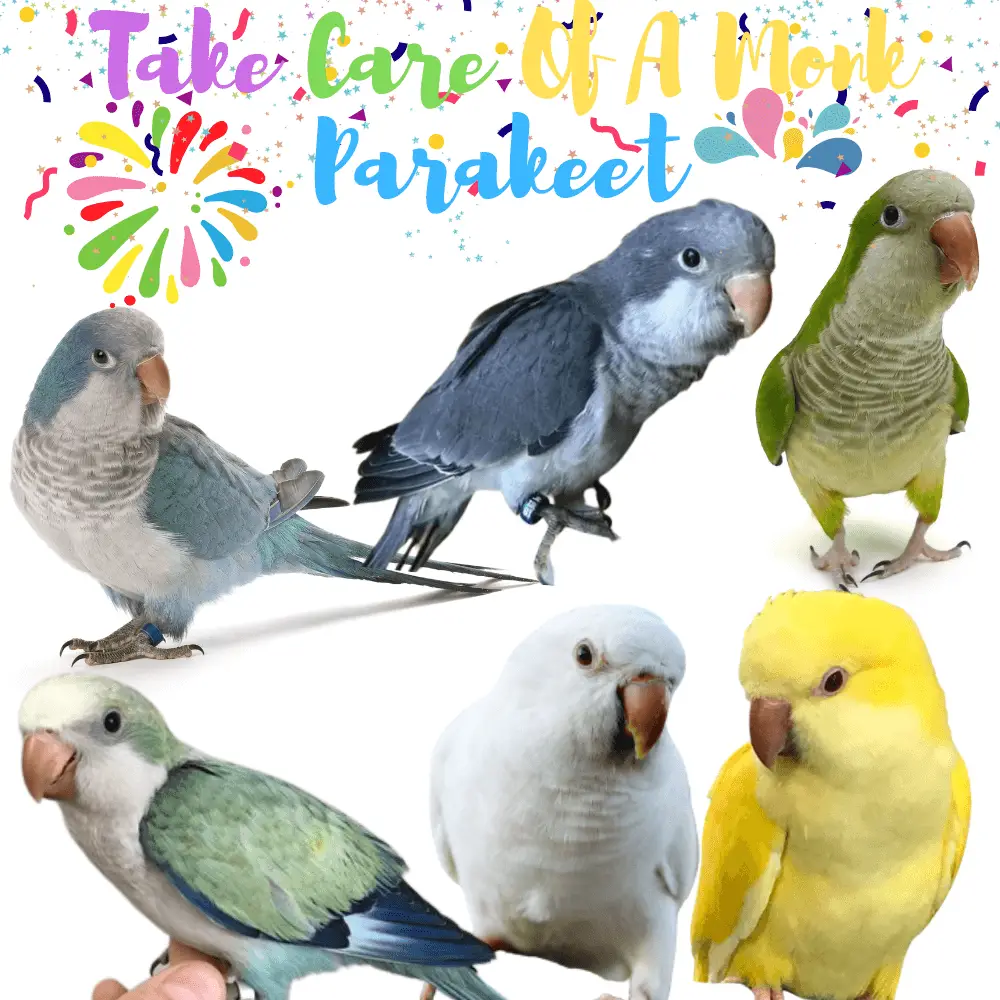
Take care of a monk parakeet: A monk parakeet or quaker parrot is an intelligent, playful, often talkative, and regularly mischievous bird species. Monk parakeets can be a great addition to your family, but they need frequent, active care to thrive. If you are considering purchasing a monk parakeet, think about the degree of your commitment, your ability to take care of the bird’s well-being, and your tolerance for noise, and mess. In the right environment, a monk parakeet can be a lovable companion for years (or even decades).
Know your monk parakeet
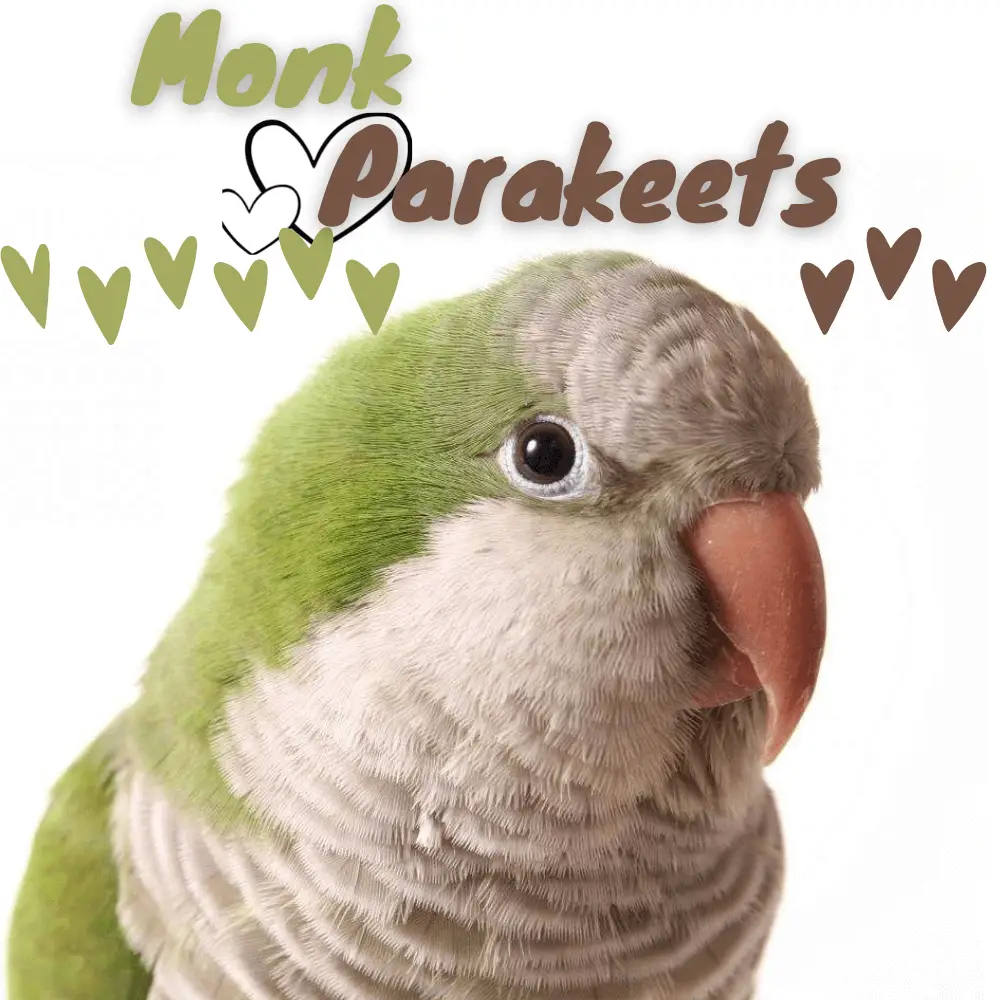
Learn more about the species. Monk parakeets are not the largest or most colorful parrots, but they are among the smartest and (depending on the individual bird) among the most talkative. Familiarize yourself with the following general details before considering a purchase:
- They are on average 27 to 32 cm long and usually gray-white and green. They can live in captivity for up to 30 years, so see this as a long-term addition to your family.
- Monk parakeets originally come from the temperate parts of South America, but they seem to thrive in pretty much any climate.
- Concerns about the ability of escaped monk parakeets to thrive in a native ecosystem are part of why ownership of the genus is banned or restricted in over a dozen states, including California. Check the regulations of your home country before proceeding with your plans for purchase.

Know the tendencies of monk parakeets. Terms like “smart,” “fearless,” “curious,” and “mischievous” often appear in descriptions of monk parakeets, and for good reason. Living with one is similar in many aspects to living with a small child.
- Usually, they are fast learners and gifted mimes, so monk parakeets are usually very talkative bird companions. (Never assume, however, that a single bird — regardless of breed — is talking.) Despite being talkative (and screaming a lot), they are not overly loud compared to other parrot species.
- Monk parakeets build nests in the wilderness that resemble apartment blocks: with “apartments” of several rooms built alongside those of other surroundings “tenants”. For this reason, they are by nature eager Borgers (or thieves, depending on their perspective).
- Monk parakeets take everything from glasses to pens to scraps of paper and bunker it in their cage. This is part of their natural instinct to collect materials for their polished nests.
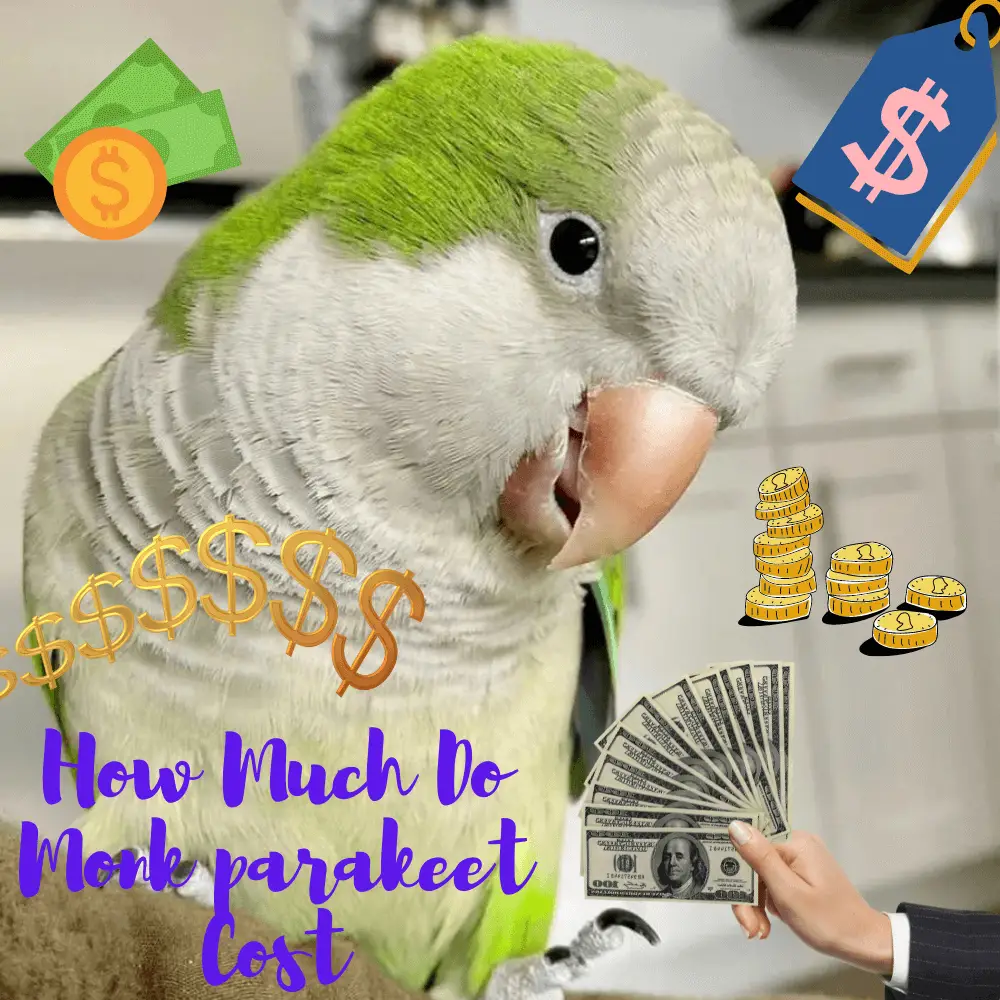
How Much Do monk parakeet Cost?
Consider where you should buy one. Monk parakeets often cost between $250-$500 from the best breeders., making them affordable for most interested buyers
Monk parakeet mutation, in general, can command anything between $250 to $1600, sometimes to $2000 with the common colors on the lower spectrum of this range.
. Not only the price but also the personality of your bird can be determined by where you buy it. Common places are:
- A responsible breeder. It costs more there than anywhere else, but this is the best place to go for a loving, hand-raised baby.
- A rescue organization for parrots. Monk parakeets may not be as common here, but if you’re lucky, you might find one. You don’t have a baby, but the cost is lower and the parrot gets a necessary, loving home.
- An animal shelter. You’re unlikely to find your monk parakeet here but ask anyway. You probably have no idea of your monk parakeet’s past when you take it over from here, and this trail is only recommended for experienced bird owners.
- A pet shop. Do your homework before considering buying here. Prices may be cheaper, but you may get an unhealthy bird worth less than your money. Not to mention that many pet stores buy their parrots from dubious sources that use inhumane methods of sourcing and breeding their birds.
- Via the newspaper, the Internet, etc. Some people may be looking for a new home for their monk parakeet and this is a wonderful place to get one, but remember to check that they don’t give up their parrot because of medical or behavioral problems.
- Monk parakeets can develop a strong affection for a particular person, so an adult monk parakeet may have difficulty getting used to a new home and new “parents”.
- Also, you may get one with behavioral problems in the past, maybe even due to neglect or abuse, unless you know their past. It’s a noble gesture to take in a monk parakeet in need, but it can turn out to be too much of a challenge if you don’t have any previous experience.
- As stated in the previous steps, purchasing a monk parakeet baby raised by hand is probably the safest way (though probably the most expensive), especially if you don’t have much experience caring for birds. There are no guarantees, of course, but a monk parakeet who has been properly cared for since birth is likely to become a well-adapted, lovable adult.
- If you choose a monk parakeet baby, set up his home with his cage, toys, etc. before his arrival, as you would do with a baby cot and the like. Be ready to welcome him to his new home.
Everything you wanted to know About Quaker parrot Colors
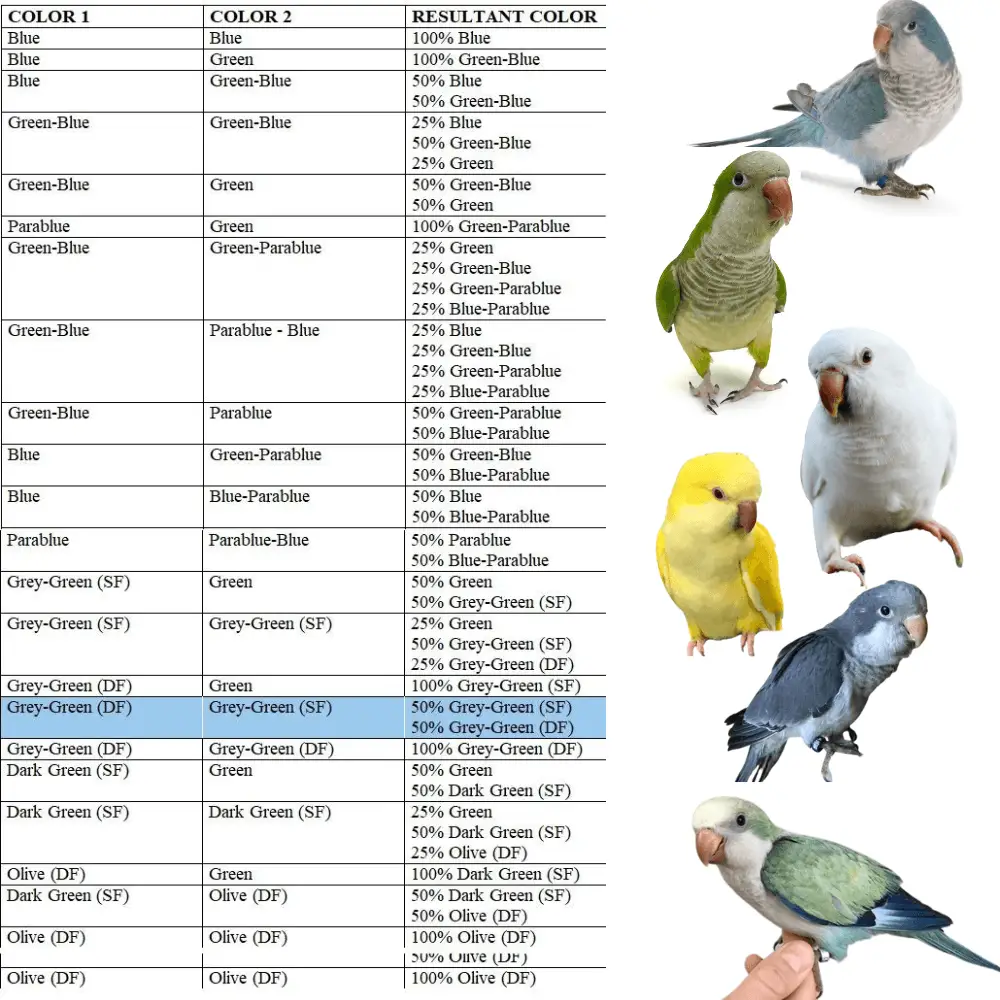
Quaker Parrot Autosomal Recessive Mutation– Varied colors have been achieved following this pattern of recessive mutation. They are:
- Cinnamon
- Opaline
- Pallid
- Lutino
- Grey-green
- Fallow
- Pied
- Aqua Mutation
- Turquoise Mutation
- Parablue
Taking care of your monk parakeet
Buy the right cage. Monk parakeets are a smaller parrot genus, but because of their active nature, they thrive best in a spacious cage. Dimensions of 45 x 45 x 45 cm should probably be the minimum, but also consider safety.
- Monk parakeets are known to be escape artists, so make sure the cage’s bars aren’t too far apart or too tight, so a curious monk parakeet can pinch his head in between. A distance of 1.5 cm is a good clue.
- To counter their curiosity and ability to escape, choose a door that opens upwards (not one in guillotine style that a monk parakeet can push up just so it becomes a trap for him). Monk parakeets are known to figure out how to unlock a door, so consider a lock as well.
Give him varied food. A repetitive food made from bird pellets not only lacks the variety to provide the right nutrients, it can also lead to boredom (and therefore lack of food) in birds like monk parakeets.
- Make the pellets a part of the feed, but also mix a selection of fruits and vegetables and occasionally nuts and seeds among them.
- However, do not give the bird avocados, as they can be poisonous to it; in addition, do not give him chocolate, caffeine, or alcohol.
Frequent cleaning. Birds make a mess – there is no way around it. In addition to their excretions, monk parakeets scatter food, destroyed toys, and things from everything else they get into their beaks throughout the cage and on your soil.
- Clean the cage briefly every day, remove large pieces and replace the display with a newspaper (you may want to subscribe to a daily newspaper if you become a bird owner).
- Clean the cage more thoroughly every week, and rub off the rods and things in kind.
- You may want to place the cage over an easy-to-clean floor surface, such as tiles or hardwood instead of carpet.
Find a good veterinarian. Take your monk parakeet to the veterinarian for annual checkups, preferably one with a specialization in birds.
- The health of the beak, claws, and plumage should be a special focus for you and your veterinarian, as problems in these places are often indicators of major problems.
- Monk parakeets can be more susceptible to fatty liver, so don’t let your bird become overweight. It may be necessary to restrict seeds and other food with high-fat content. Talk to your veterinarian if you have any concerns.
- Feather plucking is another disorder that can be common in monk parakeets; this can have physical or behavioral causes. A good bird veterinarian can also help you with this problem.
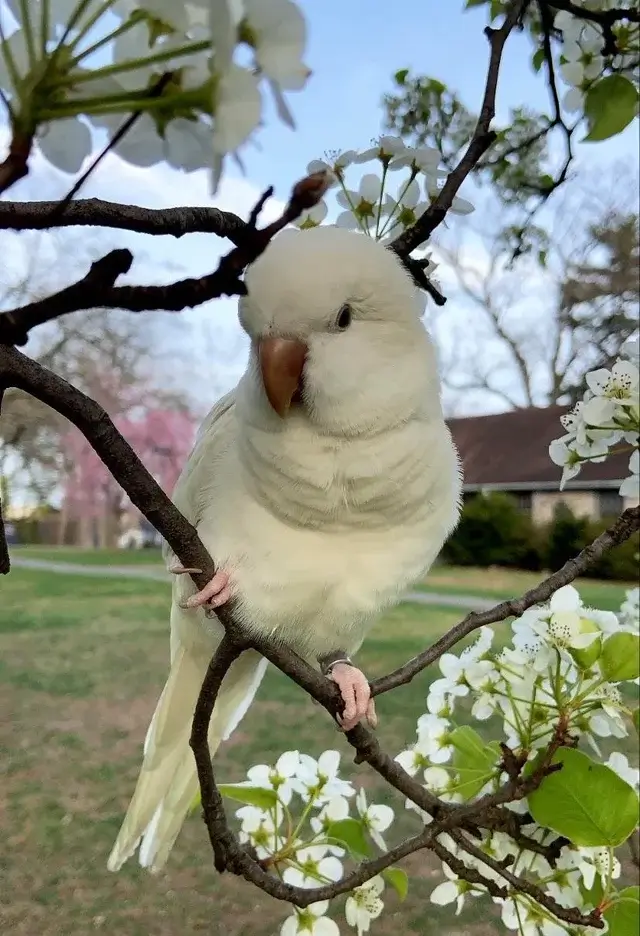
Living with your monk parakeet
Protect your bird. Because of its mischievous and sometimes reckless nature, you need to take steps to protect your monk parakeet from itself, not just from other people and pets.
- The pruning of the wings is controversial. By pruning, escape is less likely and it reduces the risk of injury by flying the bird against any objects. Ask your veterinarian for more information. However, the bird’s ability to fly is impaired. This means that he gets less exercise and the likelihood that he will be frustrated increases. In addition, many birds try to fly but then crash and injure their chests. These injuries can be quite serious and it is now assumed that trimming the wings is outdated. Instead, appropriate training (e.g., clicker training) is preferred to control the bird during its time outside the cage.
- Some monk parakeets are fearless (or perhaps foolish) enough to target cats or dogs, which can lead to serious injuries or worse, so watch out if you have other pets. The only way to figure out how they interact with each other is to let it happen, but be prepared to keep monk parakeets separate from other pets if necessary.
- The same goes for other birds. Some monk parakeets thrive well with an “accomplice”, others not so. A suspension at a young age probably offers the best chance of success.
- Exposing your monk parakeet to other people early on is also the best way to prevent it from being related to only one person and interacting only with you. However, it’s not a one-way street and you may need to instruct people (especially kids) on how to behave near your parrot.
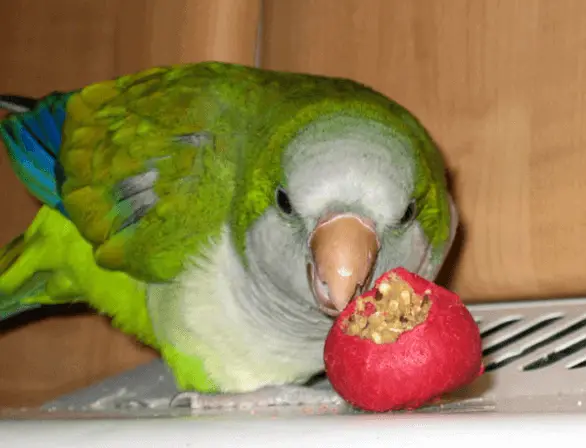
Play with your bird. Monk parakeets need attention and generally love to play, so find time each day to challenge your bird’s body and mind.
- Teach your parrot to hop on your finger early on – this is a gateway to other commands, tricks, and games.
- Equip your monk parakeet with toys and exchange them frequently to keep him engaged. Monk parakeets regularly destroy toys, so you may want to mix in homemade toys, games, and challenges. Something as simple as wrapping a treat in a piece of paper can provide your bird with little mental stimulation (at least the first time).
- There is no guarantee that a parrot will speak, but monk parakeets usually like to talk and easily enjoy it. Repeating sentences while playing is an easy way to teach him new words. Or do focused lessons of 10 to 15 minutes at a time.
- However, pay attention to what a monk parakeet hears from you (or the TV, etc.), as they are usually skillful, eager impersonators.
- On the Internet and here at wikiHow you will find many ideas for more games.
Keep the parrot actively involved. Monk parakeets want to be a part of the action, so don’t isolate him in his cage in a little-frequented place. Like a small child, regular active attention will make your monk parakeet healthier and happier.
- Place the bird cage in the main living room, e.g. in the living room. However, place it in a (not distant) corner of the room so that your monk parakeet feels actively involved and still has an area that is his.
- Give the birds plenty of time outside the cage every day. Do this not only for playing but if possible also during daily activities. Make your monk parakeet a real part of the family.
Quaker parrot Care
Source:Quaker Parrot and Lovebirds




















